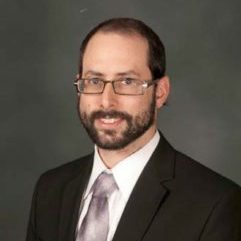The most important asset that we have is our Torah. We are the People of the Book. The study of the Written and Oral Torah is the most important Mitzvah in the Torah and the foundation upon which all of Judaism stands. The most important book of the Oral Law is the Mishna, written by Reb Yehudah Hansi.
Reb Yehuda Hanasi was the codifier of the Oral Law and the undisputed leader of his generation. He had a Yeshiva in Babylon where he taught the Mishna to hundreds of scholarly students.
Imagine visiting Reb Yehuda Hanasi’s yeshiva, spending time there and absorbing the atmosphere. It must have been amazing. Even today, walking into any yeshiva is an awesome and inspiring experience in observing the continuity and hard work that goes into who we are as a people.
Yet, as important as Torah is, Reb Yehuda Hanasi taught his students that the reading of the Megilla is even more important than Torah study. (Although the Megilla is Torah too, it did not require the same depth and self-sacrifice that Reb Yehuda Hanasi’s students were accustomed to).
The Gemara tells as that Reb Yehuda did not just suspend his classes for the reading of the Megilla. He would actually close his Yeshiva and have all of the students leave the Yeshiva and go to the local shul to hear the Megilla.
In the times of the Geonim many people had the custom of gathering a Minyan in their homes on Purim and read the Megilla for their friends and family. The Hagahos Ashri criticized them by citing Rebi’s practice: If Reb Yehuda Hanasi left his Yeshiva to go to shul, we should certainly leave the coziness of our homes to hear the Megilla in a Beis Hakneses.
A Beis Hakneses has a unique holiness that supersedes even the study of Torah in Reb Yehuda Hanasi’s own Yeshiva!
What is a Beis Haknesses?
The Rambam in the Laws of Prayer writes the following:
“Any location that is populated by ten Jews is obligated to appropriate a house where they can congregate for prayer whenever it is time to pray. This place is called a Beis Haknesses.” (Rambam, Mishna Torah, Laws of Prayer, Chapter 12)
Residents of a city may actually force each other to build a shul and (according to the Kitzur Shulchan Aruch) fine them if they do not help make the Minyan.
The main criterion for a Beis Hakneses is community involvement.
When the Mishkan was built, each Jew needed to donate at least half a Shekel to the building of the Mishkan, and these half-shekels were melted down to create the Adanim – the Base of the Mishkan. The strength of the Beis hamikdash came from its status as Tel Piyos – The Mountain toward which everyone prayed, and the daily Tamid needed to be financed by the Jewish people as a group. If a city was late in submitting its share of the Machatzis Hashekel, the Bais Hamikdosh would put out money. The show could not go on without them.
Many of us could pull ten men together and hold a Friday night minyan or a Megilla reading in our homes, but even if we could pull the ten holiest Jews alive into our minyan, the Kedusha of the Minyan would not approach the holiness of a simple Beis Haknesses.
A Beis Hakneses is the holiest building that a city can have, but it is only a Beis Haknesses because it is the sum total of the efforts, abilities and self-sacrifice of every person in it.
May we all merit to continue to build our Batei Knessiyos and make sure that they live up to the standards of the legendary students of Reb Yehuda Hanasi. We need to imagine them leaving their world-class Yeshiva and heading for our little shuls saying: “That is where we want to hear the Megilla”.

0 Comments